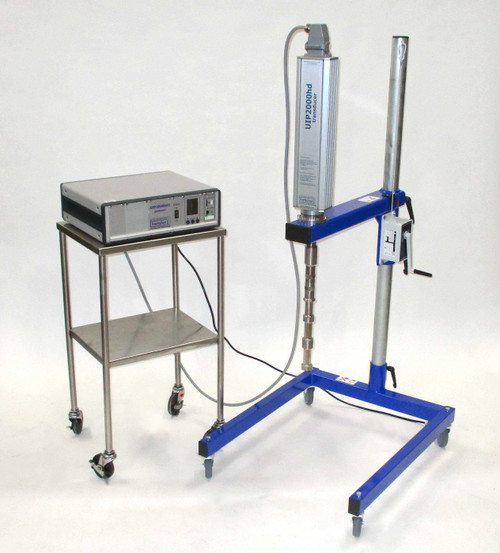Product Overview
Hielscher Ultrasonic Well Plate Microtiter Homogenizer
- Uniform sonication of 96 samples
- Simultaneous mass sample preparation
- Precisely controllable sonication parameters (amplitude, duration, cycle, temperature)
- Reproducible, repeatable results
- Convenient and safe operation
Uniform mixing in microtiter plates can present certain challenges due to the small volumes and specific design of the wells. Here are some key challenges that researchers may encounter when trying to achieve uniform mixing in microtiter plates:
Sample Volume and Surface Area: Microtiter plates have small well volumes, typically ranging from tens to hundreds of microliters. The limited volume can make it challenging to mix samples effectively, especially when working with small amounts of reagents or samples. The small surface area of the well can also affect the efficiency of mixing as it limits the contact area for mixing to occur.
Mixing Dynamics: Traditional mixing techniques, such as pipetting or shaking, may not be suitable for microtiter plates due to the small scale and limited space within the wells. Achieving thorough mixing across all wells can be difficult, particularly when dealing with high viscosity samples or when the desired mixing speed is not compatible with the plate design.
Mixing Variability: Uneven mixing within microtiter plates can result in variability across different wells, leading to inconsistent experimental results. Factors such as variations in liquid properties (e.g., viscosity, density) and the positioning of the wells within the plate can contribute to mixing variability. It becomes crucial to find methods that can minimize these variations and ensure uniform mixing.
Cross-Contamination: Microtiter plates are commonly used for high-throughput applications, where multiple samples or reagents are processed simultaneously. This poses a risk of cross-contamination during mixing, especially if the same pipette tips or pipetting techniques are used for multiple wells. Preventing cross-contamination becomes essential to maintain the integrity and accuracy of the experimental results.
Overcoming the Challenges:
To address the challenges of uniform mixing in microtiter plates, researchers can employ several strategies:
Optimizing Mixing Techniques: Exploring alternative mixing techniques, such as the Hielscher UIP400MPT or using specialized microplate shakers, orbital mixers, or magnetic stirrers with small magnetic bars, can enhance mixing efficiency and reduce variability. These techniques are designed specifically for microtiter plates, allowing for controlled and uniform mixing.
Customizing Experimental Protocols: Modifying the experimental protocols by adjusting mixing time, speed, and the number of mixing cycles can improve uniformity. It may require optimization and validation for each specific application to ensure consistent and reproducible results.
Consideration of Plate Design: Selecting microtiter plates with designs that promote better mixing, such as plates with specific well shapes or bottom features (e.g., conical or V-shaped wells), can enhance fluid movement and mixing efficiency.
Proper Pipetting Techniques: Implementing careful pipetting techniques, including using dedicated pipette tips for each well and avoiding splashing or creating bubbles, can help minimize cross-contamination and ensure accurate and uniform mixing.
Conclusion:
Uniform mixing in microtiter plates presents certain challenges due to the small volumes and specific plate design. Researchers need to be aware of these challenges and employ appropriate strategies to achieve consistent and uniform mixing across all wells. By optimizing mixing techniques, customizing experimental protocols, considering plate design, and employing proper pipetting techniques, researchers can overcome these challenges and ensure reliable and reproducible results in their microtiter plate experiments.








